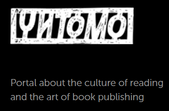Dalit Trends and Consciousness: A Critical Study of Kabir’s Poetry
by Dr. Anshu Pandey
Kabir is the best known voice for equality of caste and religious divisions in poetic, picturesque, fiercely strong terms. ‘Dalit consciousness ’ from an unabashedly brahaminical position, might appear an oxymoron in itself for the simple reason that aesthetics as such is believed to be the sole preserve of the twice born. The assumption is that dalits being low caste are uncivilized to have any sense of consciousness; it also makes an effort to analyse the broken up perspectives of dalit consciousness. In this process the myth that dalit philosophy and aesthetics, with whatever be its type and height of maturity, is frozen in time would also stand thoroughly examined, contested and eventually overturned.
The role of the history of dalit consciousness mainly begins from the time of medieval bhakti time which is the reason of dalit awareness in India. Dalit literature should consider that the touching aspect of literature will always help the consciousness feature. Dissimilar historical events, situations and turns have brought about important changes in the growth of dalit awareness. Arjun Dangle describes about dalit literature as:
Dalit literature is one which acquaints people with the caste system and untouchability in India… It matures with a sociological point of view and is related to the principles of negativity, rebellion and loyalty to science, thus finally ending as revolutionary. (Dangle 265)
Dalit literature is exactly that literature which creatively portrays the sorrows, tribulations, pains, slavery, squalor, ridicule and poverty suffered by Dalits from higher class. Dalit literature is but a haughty image of grief and plight. Some low-caste bhakti poets’ raised the issues related to the plight of Dalits the bhakti-period and gave them a measure platform. When figures like Kabir, Ravidas, Namdev, Tukaram, Eknath, Chokhamela are faced with harassment at the hands of some mighty temporal authority, they are conveyed through their confidence on faith, and the miracle that mediates on their behalf takes place in public. The Bhakti movement started from first time in Tamil Nadu and gradually spread out the whole of north India. The confronts faced by figures like Nåmdev, Nånak, and Kabir at the hands of those who hold sequential authority immediately historicize subjects of maltreatment and faith that would have remained current anxiety after the supposed lives of the saints. The significant reasons for the development of dalit literature are, first One, most of the bhakti saint-poets were low-caste local preachers; two, they are against traditional complex Brahmin practices. Maybe the most destructive of these divisive uses of the bhakti public occurs when “Brahman” and “non-Bråhman” are made to stand for social opposites. As one can seat various moments in the history and literary remainder of the tradition in Marathi, for example, a clear anti-Brahman sentiment occurs in the works credited to figures like Namdev (fourteenth century) and Tukaram (seventeenth century), and this sits next to periods of upper-caste discrimination, such as one sees in the many centuries in which the Vitthal temple in Pandhapur, under the administration of a particular Brahman community, refused entry to the lowest castes. The main Bhakti poets from Namdev to Kabir were low-caste authors who wrote with absolute derision against the brahaminical conventions. Kabir is a great envoy of India’s spirit, elegance and genious. The Indian national perception is the base from which his work produces. He has absorbed India’s cultural tradition, made it his own, developed it, given it a universal extent and connotation. We find in his works at their best a straightforward decorum of language, a precision of phrase and proverbs, a cultivated judgement, and intense poetic sensibility and a synthesis of thought and feelings. In India Kabir is recognized as the greatest poet in Hindi literature and saint who reforms the society. Kabir speaks very slight of him and we can’t therefore be sure of his authorship of many works credited to him.
Kabir declared and warned in unmistakable terms that human life is not granted again and again. It is exceptional prize won by excellent behavior and spotless living. Kabir considers, that, man discovers speedily that he cannot variety beyond what his own physical nature permits, and that he is inexorably guided towards his purpose by some force that keeps working on man.
Human life is so very precious
We do not it again
Like ripe fruit that drops from tree,
Can it ever rejoin? (Trans’G.N.Das,)
Kabir's poetry is not a denote success; it carries the liveliness, the dignity and the sublimity that is decontamination itself out in his central speeches and writings. To make people conscious of the true aspire in life and explain to the sufficient about the true meaning of religion, Kabir came to earth. Kabir says that man feels overvalued in “confidence” but it has episodic his natural growth. He doesn’t know how to be an ego-free person; otherwise he has been a happy creature. A man is burning like his own obsession. His state of mind and spirit is compared by the writer to the hustle-bustle of the society. As the matter of fact, he does not know himself sufficiently. He doesn’t know in real sense what he is doing. The meaning of dalit literature, bhakti poets were indeed dalit poets for not only they were dalit themselves; they wrote against the extremism of upper caste. But they cannot be called true dalit poets because the main issue which they dealt with was religion not dalit consciousness.
As Limbale points out:
Their writing expresses the emotion and commitment of an activist .That society may change and understand its problems -- their writing articulates this impatience with intensity. Dalit writers are activist – artists who write while engaged in movements. They regard their literature to be a movement. Their commitment is to the Dalit and the exploited classes.” (Limbale 33)
For the reason that bhakti poets remained very much within the domain of the religion, they failed to shape out literature outside the literature of Hinduism. In fact, creative should not try to destroy emotions in literature. It is meant to reinforce its demonstration and depiction.
R.G. Jadhav said:
It shall be the mission of Dalit writing to transcend established norms and standards and to create new ideals and names emerging out of the characteristic social awareness present in Dalit literature. (Jadhav 299)
These bhakti saints yet remain a basis of motivation for anti-caste agitations and movement all over the India. The main bhakti poets who inspired dalits consciousness were Ravidas, Namdev, Tukaram, Eknath, Chokhamela, Kabir and others. All these poets always question the orthodox and repressive brahaminical understanding of Hinduism. Kabir along with, Namdev, Chokhamela formed the backbone of the medieval anti-caste movement. Kabir, the famous Bhakti poet is famous for his bhajanas(songs) and dohas(couplets).Many of bhajanas(songs) and dohas(couplets were full of wisdom and showed them how to lead a pure and happy life.Kabir often highlights in his poems, the contrast between high caste and low caste community as well as the differences that arise between the two entities. Kabir is the best known voice for equality of caste and religious divisions in poetic, picturesque, fiercely strong terms. Despite his formidable foregrounding social life, Kabir tends to gravitate more towards transcendence and metaphysics. The poetry of Kabir ultimately covers the poetics of resistance. The critic Ram Kumar Verma described about the greatness of Kabir:
Kabir has been acknowledged as one of the greatest poets who have given the minutest details of the whole history of human thought which is amazing and amusing to contemplate upon. The poet does not write but utters and his speech scores much above the authority of all scholarship of written thought. In short Kabir was ‘not of an age, but for all time.”(Kabir ka Rahasyavad)
His resistance from a modern dalit radical perspective might appear moderate and even compromising but given the times he was writing in, it was quite radical. Kabir is the best known voice for equality of caste and religious. He composed his verses in the ordinary language of the people. The poems of Kabir are rich in pictographic quality. Especially his portrayal of nature is magnificent for it is also mingled with divine contentment, strength of feelings.
We all hail from the same land
And reach here on earth
Touched by the winds that blow here
Each pursues his own pat. (Trans’G.N.Das, 168.)




